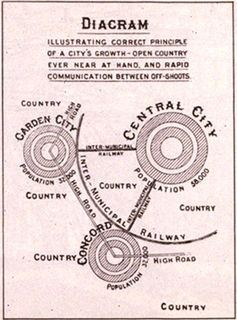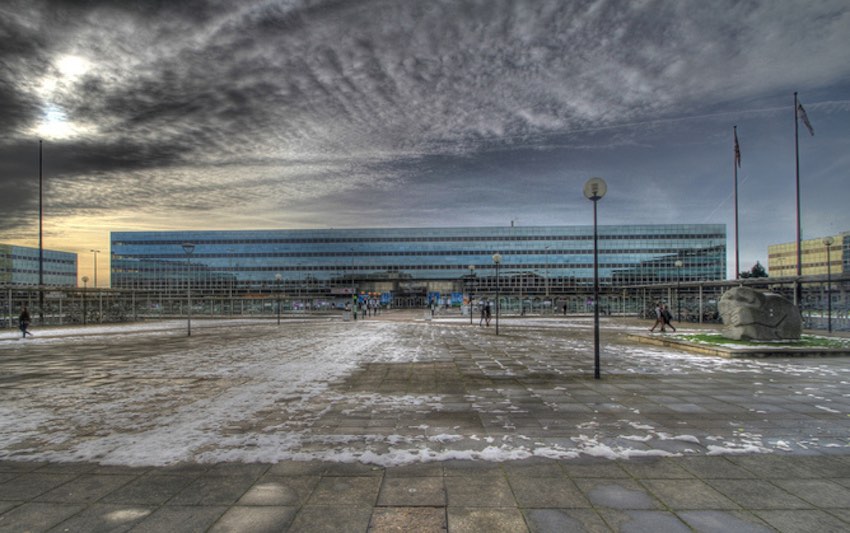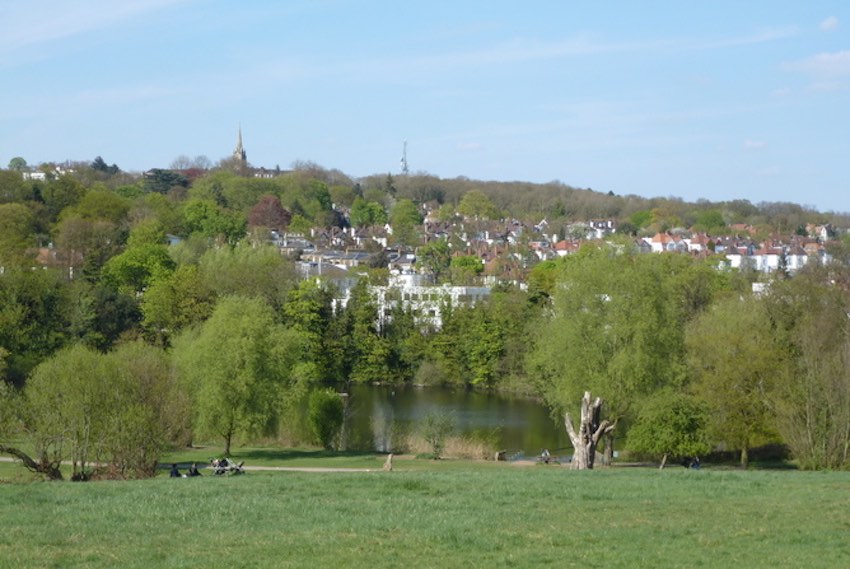The government is investing more than £300m in building what George Osborne has described as the first “proper” garden city in nearly a century, near Ebbsfleet, Kent.
To understand what garden cities are, and why they should be invested in, we need to go back a bit – in fact, more than 100 years. At the turn of the 20th century, Ebenezer Howard proposed building a constellation of towns, each with about 32,000 residents. Famously expressed through a series of diagrams, these towns would be largely self-contained places to live and work. They would be located around industrial cities like London which themselves, over time, would be decentralised into smaller garden city-style settlements. All these places would be linked by electric rail and canal to permit the easy movement of people and goods.

Howard wanted to control what he called the “smoke fiend” of polluting transport, which was already blighting cities at the turn of the century. The idea was to give people the chance to get away from London’s rank conditions and offer them the best of town and country combined: healthy air; affordable, good quality housing; and (mostly) local food, facilities and jobs. Many of Howard’s intentions were realised in two garden cities: Letchworth Garden City, built from 1903, and Welwyn Garden City, built from 1920.
The idea of garden cities – and especially garden suburbs and towns – took off around the world including in Scandinavia, Australia, the US, South America and Japan. In many places, hybrids emerged, building on both garden city ideas and related traditions such as Utopian settlements, industrial villages and the City Beautiful movement. Before and between the two world wars, there were plenty of garden villages and garden suburbs created in the UK, including the famous and beautiful example of Hampstead Garden Suburb. But there have been no more garden cities built in the Britain since Letchworth and Welwyn.
From our partners:
What happened?
After World War II, a number of “new towns” were built following the New Towns Act of 1946, with examples including Stevenage, Hatfield, Telford, Runcorn and Milton Keynes. The new towns, though, have drawn a much more mixed response than the garden cities that preceded them. While sometimes criticised as places to live, many new towns have strong support from residents and proponents of their social purpose and design.
More recently, in the light of increasing worries about making new places sustainable, a previous Labour government tried to develop a number of so-called ecotowns on former airbases and other pieces of leftover land, but most of these weren’t built after local communities rejected them. Over the last 40 or 50 years, there has also been quite a lot of pretty ordinary housing developed by builders in dormitory estates. These have tended to make places which are just residential – not proper towns.

Many people aren’t impressed with the way that postwar housing estates in cities have turned out either; this was most recently reflected in prime minister David Cameron’s announcement about redeveloping the hundred “worst” housing estates. All of this means people usually aren’t too keen to hear that any new housing is being built near them – as any scan of local newspapers makes abundantly clear.
One thing has stood out though. Most people still really like garden cities. They like the Arts and Crafts houses designed by Barry Parker and others at Letchworth and the delicacy and refinement of the red brick neo-Georgian architecture of many of Welwyn’s houses and public buildings. They appreciate the numerous trees and avenues that make the garden cities feel fresh, green, open and pleasant to walk around.
And in Letchworth, they value the way that money which comes from the town’s landholdings (things like farms, shops, office buildings and so on) is poured back into the local community by the town’s governors, as part of a unique arrangement whereby people who live there get extra health facilities and other valued services.
Where to next?
With this context in mind, the UK funding announcement, made by the country’s chancellor, George Osborne, starts to make sense. England is having a housing crisis. In the south of the country, where the economy is strong, there aren’t enough places to live. In the north, there are problems caused by low demand for housing, because economies there have been suffering for a long time.
For governments of any complexion, the upshot is that supporting new garden cities increasingly looks like a good idea as a way to help supply more houses – and to make homely towns to live and work in instead of sprawling housing estates people have to commute from for jobs and services. It’s particularly important that the garden city brand is still a positive one: there seems more chance that people will be less opposed to new garden city developments than they would be to other kinds of settlements. They may even welcome them.

The garden cities of Letchworth and Welwyn were created without any government support, and their early days were fairly financially precarious as a result. But now the government is prepared to help with substantial financial contributions to at least three new garden settlements, with Bicester and north Essex in addition to Ebbsfleet.
New garden villages – like one on the edge of Hatfield in Hertfordshire – are being planned, and some people advocate them as a way to solve the housing crisis.
Of course, garden cities will not be the only way to meet housing demand in England’s south-east. What’s more, there’s a risk that they might not be put in the right places in terms of transport, suitable land, population and housing need – just where land is available. It’s not really clear how far new garden cities in northern locations could help revive local economies and deliver Osborne’s “Northern Powerhouse”. There’s also some anxiety that they could infringe on the green belt, which many hold sacrosanct. These are all valid points.
But despite these fears, I remain optimistic that in supporting a new round of garden cities and other kinds of garden development we are heading in the right direction. My university did some detailed consultation and design-based work on this idea in 2008, and again in 2014. It remains clear garden cities could work well as part of any new development balance. I’d like to see a number of different kinds of settlements created to make beautiful, diverse, affordable and compact places – and that would include both new garden settlements and remade housing estates. Garden cities are not the whole answer, but they could and should be an excellent part of the mix.
This feature originally appeared in The Conversation.


















